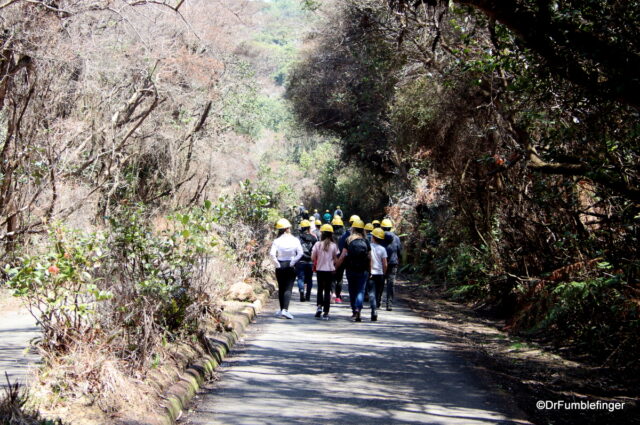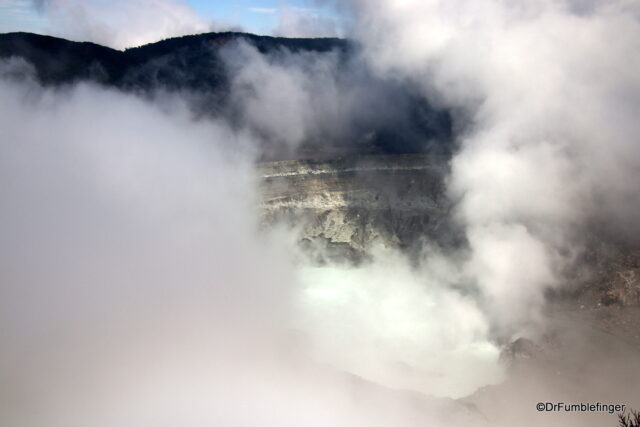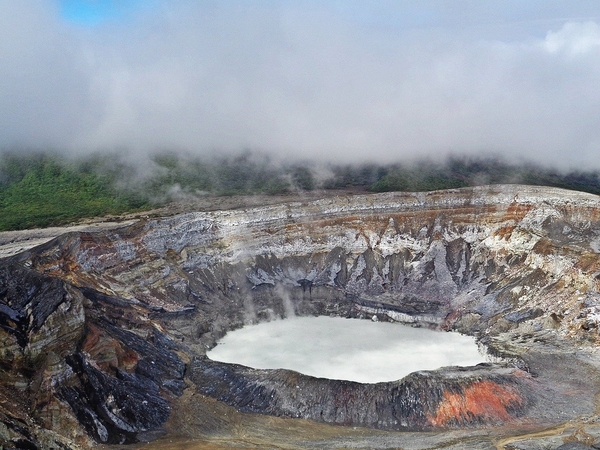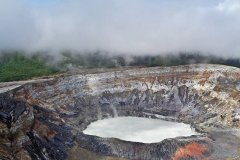
Poas is one of many volcanoes in Costa Rica, although it’s only one of three which are still considered active. Poas Volcano National Park is situated atop a mountain, at 2,708-metre (8,885 ft), and is located in central Costa Rica a few hours drive through the scenic hills north of San Jose.
Poas Volcano has erupted 40 times since 1828, including in April 2017 when visitors and nearby residents required evacuation. The area around the volcano was closed for nearly a year and a half. The activity of the volcano diminished with the passing months, and monitoring equipment and safety shelters were thought to provide adequate safety. The park reopened to visitation in September 1, 2018, but visits are limited to short periods in the crater observation area, and require an advance reservation.
We took a tour from San Jose to see the volcano and were delayed for over a half hour at the entrance because there were increased fume levels that morning (mostly sulphur dioxide) that exceeded safe levels; fortunately these cleared fairly quickly and we were allowed in.

Group walking to rim of the Poas Volcano
Visitors are gathered in groups of about 25 at the Visitor Center, given color-coded hard hats, and at set times walk about a half kilometer to the Crater Rim. The walk is on a good trail through a cloud forest, which becomes damaged and stunted as you approach the crater rim because of acid rain.
Each group of visitors has about 20 minutes at the Crater Rim in which to (hopefully) view the volcanic crater. There are monitors of toxic gas levels and a signal system that warns you if the levels become dangerously high.
Mostly our views into the crater were completely obscured by vog (volcanic fog). The thick sheet of white got to be a bit monotonous.
We had time to study the visitor viewing area because there was not much more to see. One thing that became obvious is that the metal railing is being damaged by corrosive acid rain and dented by flying volcanic rock debris.
We were hopeful that during our 20 minute window we would have a chance to see the principal crater and it’s lake, which is about 0.3 km wide and 30 m deep. It is one of the world’s most acidic lakes, the pH at times being almost 0 (depending on how diluted by rain water it is). The bottom of this lake is covered with a layer of liquid sulfur and the lake releases acid rain and acid fog.

Our brief view of the Poas Volcano crater
A few minutes before we were scheduled to return to the Visitor Center, the air began to clear a little and for about 20 seconds we had a glimpse of part of the crater and its lake.
The clearing of the crater was partial and lasted only about 20 seconds, but it was enough to make the journey worth the effort. Our guide told us that in her five prior visits they had not even glimpsed that much, so we felt fortunate.
On a clear day, this is what the principal crater and its lake look like. I’m told this is a relatively rare and uncommon scene:

(Poas Volcano, Image by Jerzy Andrzej Kucia from Pixabay)
Volcanos fascinate me, and this one was no exception.
(Click on thumbnails to enlarge, right arrow to advance slideshow)
